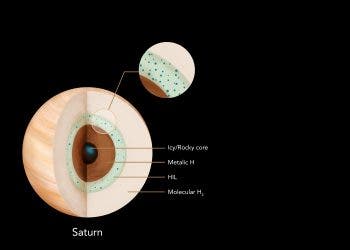
Most people don’t know this but helium — the familiar inert gas we all use to inflate party balloons — is running out at an astonishing rate. Helium is the second lightest chemical element in the Universe, so light that it can’t be kept by Earth’s atmosphere as it floats into space whenever it gets the chance to escape. Despite helium is non-renewable, the element is being currently squandered for basically nothing at all around the world because of bad policies, this despite the incredible value it poses to science and humanity.
Why we need helium
Currently, helium is indispensable for such applications like electronics, medicine, defense, minerals and space exploration. Forget your party balloons, without helium hospitals would have no chance in using their MRI scanners that are cooled by the gas in liquid form. Helium in its liquid state can only exist at around -270 degrees celsius or so, and its the best option scientists currently have to cool down matter to enable the study of quantum effects, which would otherwise be disturbed by the vibration of atoms at warmer temperatures. The Large Hadron Collider also uses liquid helium for cooling, and without it, many of its discoveries like the latest Higgs boson would have been more difficult if not impossible to make.
Helium is an inert gas that, while abundant in the universe, is very rare on Earth, making up just 5 parts per million of the atmosphere. Most of the helium we use today is found in gas pockets trapped inside the planet, typically obtained as a by-product of oil extraction. However, we can’t artificially obtain helium. Once it’s gone, it’s gone for good, baby!
Helium is made either by the nuclear fusion process in the Sun or by the slow and steady radioactive decay of terrestrial rock, which accounts for all of the Earth’s store of the gas. So, despite the Earth took 4.7 billion years to slowly build its current helium reserves, at the current rate we could end up depleting all of it in a generation’s time, according to Nobel laureate Robert Richardson, professor of physics at Cornell University in Ithaca, New York.
So, despite helium has proven itself to be an extremely valuable commodity time and time again, people seem to be keen on wasting it. Why? Well for one bad policies, and it all started going downhill once with an absurd law passed in the United States in 1996 which basically mandated that all helium reserves in the porous rock of a disused natural gasfield 30 miles north of Amarill — billion cubic metres or about half of the world’s reserves – had to ALL be sold by 2015 in order to make-up for the initial investment that went in building up the reserve. The law stipulated the amount of helium sold off each year should follow a straight line with the same amount being sold each year, irrespective of the global demand for it. What this meant is that the market was simply swelled by this immense influx of helium making it too cheap.
“As a result of that Act, helium is far too cheap and is not treated as a precious resource,” Professor Richardson said. “It’s being squandered.”
The world could be out of helium in just 30 years!
Today, helium is far too cheap for it to be worth recycling. According to Richardson, the price should rise by between 20- and 50-fold to make recycling more worthwhile. Even NASA makes no attempt to recycle the helium used to clean is rocket fuel tanks, one of the single biggest uses of the gas.
The latest call to action on the issue comes from Australia, where recently a new helium recycling facility at Macquarie University in Sydney was launched this week (Jul 30, 2013). Dr Cathy Foley, chief of CSIRO Materials Science and Engineering made the comments ahead of the launch:
“It’s a precious resource which we’re just letting go,” says Foley. “It’s critical for a lot of scientific experiments.”
“And once it’s all gone, it’s not easy to make helium. You have to either do a nuclear reaction or go to the Moon to get it.”
Foley says while CSIRO has been capturing and re-liquefying helium for many years, most laboratories just allow their used helium to escape. The university has a number of magnetoencephalography (MEG) machines that study magnetic fields in the brain to understand brain processes such as language learning. To detect small magnetic fields, these machines use a super-conducting device, which needs to be cooled to very low temperatures. She says CSIRO has helped develop a system for the MEG machines that can capture 90 percent of spent helium and re-liquefy it quite simply.
“When you buy a helium balloon, you might get it for $3.50, but the helium in that is really worth about $35 so it’s seriously underpriced,” says Foley.
Professor Brent McInnes, from Curtin University, agrees.
“We are going to see helium rationing in the near future. It already exists in the scientific market today,” McInnes told a briefing held by the Australian Science Media Centre yesterday.
“Then we’ll know what the true cost of helium in party balloons is,” he says, adding that use of the gas in party balloons is actually a very small sector of the helium market.






